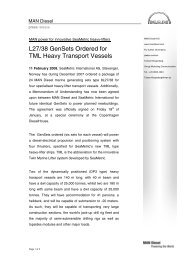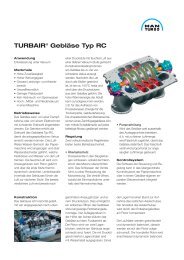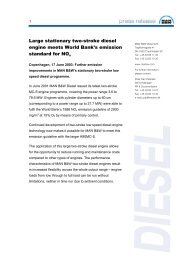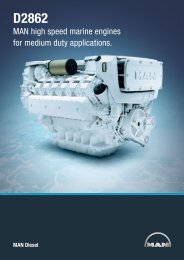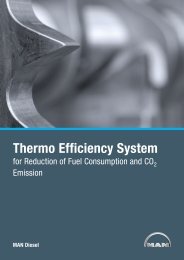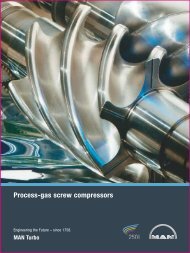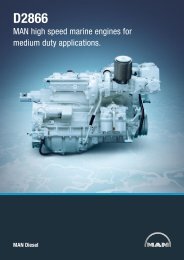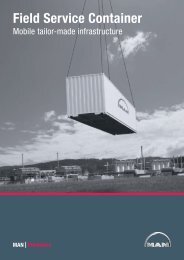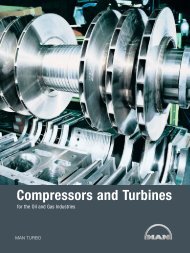Download file - MAN Diesel & Turbo SE
Download file - MAN Diesel & Turbo SE
Download file - MAN Diesel & Turbo SE
Create successful ePaper yourself
Turn your PDF publications into a flip-book with our unique Google optimized e-Paper software.
Therefore, for all marine applications, an<br />
alarm set point of 55ºC for the scavenge<br />
air temperature is applied for protection<br />
of the engine.<br />
The standard marine scavenge air cooler<br />
is specified with a maximum 12ºC temperature<br />
difference between the cooling<br />
water inlet and the scavenge air outlet<br />
at 100% SMCR, which gives a maximum<br />
scavenge air temperature of 36 +<br />
12 = 48ºC for the scavenge air cooler<br />
layout and, accordingly, a margin of 7ºC<br />
to the scavenge air temperature alarm<br />
limit of 55ºC.<br />
A temperature difference of 8ºC is considered<br />
to be the lowest possible temperature<br />
difference to be used for a<br />
realistic specification of a scavenge air<br />
cooler. Accordingly, the 48 - 8 = 40ºC is<br />
the maximum acceptable scavenge air<br />
coolant temperature for a central cooling<br />
water system, see the principles for<br />
layout of the scavenge air cooler in Fig. 3.<br />
The demand for an increased tropical<br />
scavenge air coolant (central cooling<br />
water) temperature of up to 40ºC,<br />
therefore, can be compensated for by a<br />
reduced design temperature difference<br />
of the scavenge air cooler. This can be<br />
obtained by means of an increased water<br />
flow and/or a bigger scavenge air<br />
cooler.<br />
Ambient Temperature Operation and Matching - <strong>MAN</strong> B&W Two-stroke Engines<br />
9



